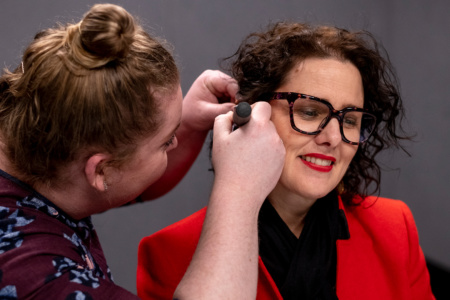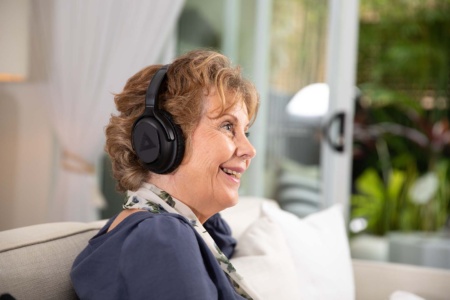Hearing aids and cochlear implants are both excellent hearing solutions for people who are deaf or with residual hearing.
The best type of device will differ from person to person and should take into consideration the advice of their medical specialists, speech pathologist, audiologist, hearing assessment or hearing test results and the needs of the individual.
A cochlear implant can help someone who is deaf to hear by doing some of the function of the inner ear, electrical signals deliver sound and stimulate the auditory nerve. Comparatively, hearing aids amplify sounds to assist with hearing.

What are hearing aids?
Hearing aids are small wearable electronic devices that amplify sound to assist people with hearing impairment or hearing loss.
Hearing aids are a good option for people with mild, moderate or moderately severe hearing loss. These small external devices either sit behind the ear or in the ear. Using technology like hearing aids often improves quality of life as it allows the user to better socialise and connect with their friends and family.
Hearing aids are battery powered, they amplify sounds that are picked up using an inbuilt microphone, speaker and computer chip.
There are many different types of hearing aids, the best option will vary from person to person. An individual’s hearing loss or impairment, the advice of their hearing professional and personal style preferences will influence which hearing device is chosen.
Hearing aid style options include:
Behind the ear (BTE) hearing aids: the part of the device containing the battery and other features sits behind the ear and is connected to an ear fitting that sits inside the ear canal to transmit sound.
Receiver in the canal (RIC): this is smaller than a BTE device and has a thin, almost invisible wire that connects the hearing aid to the loudspeaker receiver that sits within the ear canal.
In the ear or in the canal (ITE/ITC): the ITE sits completely within the outer ear, while the ITC sits just inside the ear canal.
Completely in the canal (CIC) or invisible in the canal (IIC): these sit deeper in the ear canal, making them almost completely invisible, these are the most discrete option.
How hearing aids work
All hearing aids generally work in a similar way, they make sounds louder, improving the hearing of the user and ultimately increasing quality of life.
Hearing aids have a small microphone which converts sounds into an electronic signal.
Depending on the level of hearing loss of the user, the signal is then processed and modified by the device.
Lastly, the hearing aid contains a miniature loudspeaker called a receiver which sends the processed sound through the earfitting.
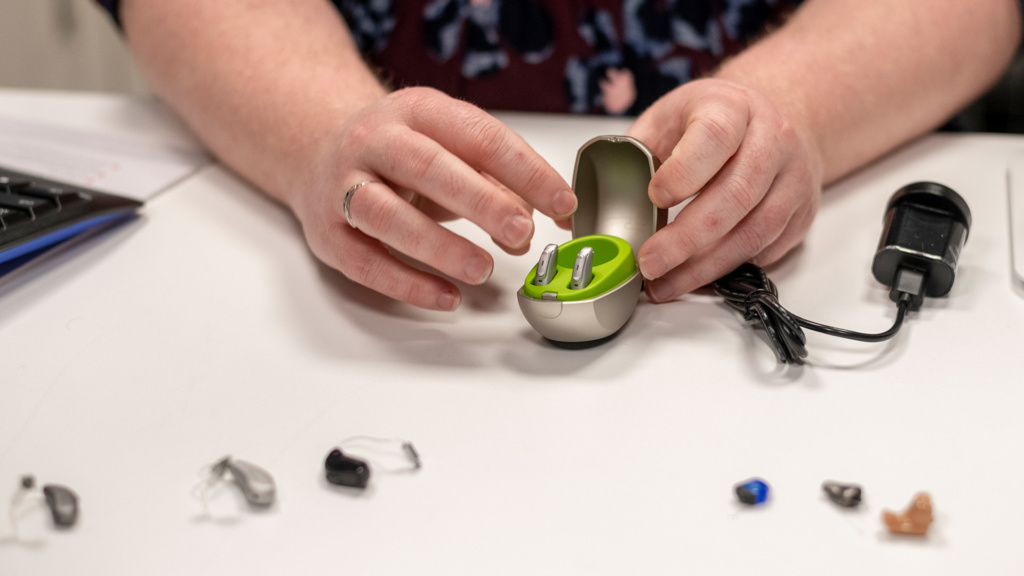
Pros and cons of hearing aids
Hearing aids are a good option for many people with hearing loss, allowing the user to control some aspects of the technology, including volume and device power status.
Hearing aids are a fantastic way to improve communication and reduce isolation.
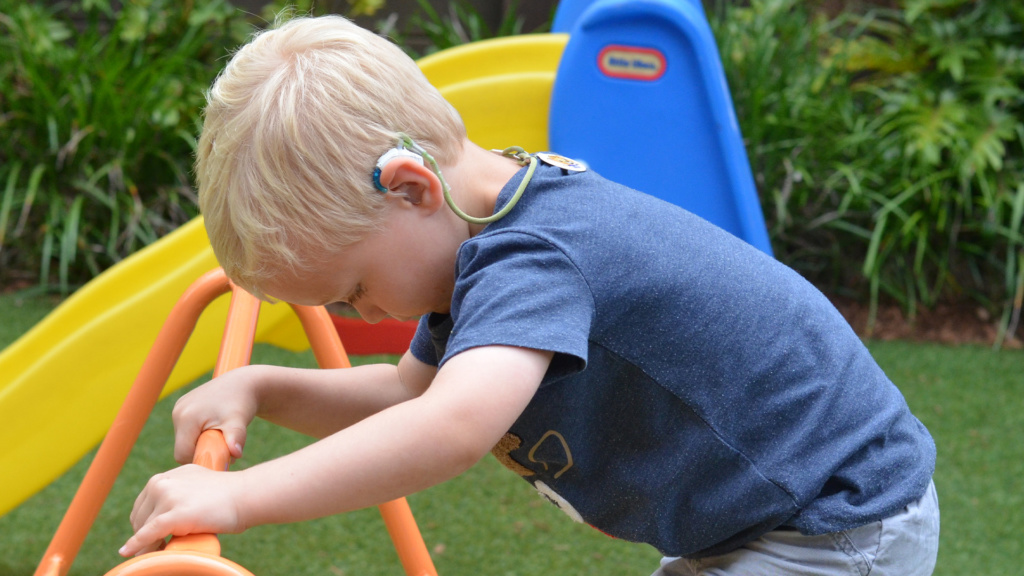
Benefits of hearing aids include:
- When worn consistently, hearing aids can help to reduce further hearing loss by keeping the brain’s auditory pathways stimulated
- Hearing aid style options including the receiver in canal, in the ear, completely in the canal, and invisible in the canal, offer improved customisation in terms of the fit in the ear, size of the device and how discretely they can be worn
- In comparison, the behind the ear models are larger in size, making them easier to handle – a good option for people with arthritis or vision impairment
- Behind the ear models can also last longer as the active components are sitting behind the ear which protects them from potential damage or harm from ear wax, etc. in the ear canal
- Many hearing aids can be equipped with rechargeable batteries
Some hearing aids can automatically adjust to the environment the user is in, while others can be adjusted via remote control or smart phone app to the specifications and at the convenience of the wearer.
Perceived Hearing aid cons include:
- Battery life on some devices can be challenging
- The visibility of the external device
- Challenges associated with fitting them in the ear for individuals with arthritis or impaired movement
- Risk of misplacing the device
- Risk of incurring technical difficulties in operating the device and settings
Please note that a lot of these downfalls can be overcome by talking to an audiologist who can tailor the device to your needs, should something go wrong Hear and Say is here to help.

What are cochlear implants?
Cochlear implants are implantable devices that provide sound to a person with profound or severe hearing loss.
Cochlear implants are made up of two components, an implant is surgically placed under the skin to bypass the damaged portion of the hearing to stimulate the auditory nerve, and a sound processor that sits behind the ear. Cochlear implants are typically recommended when hearing aids are no longer enough as they enhance the clarity of sound and improve someone’s ability to understanding speech.
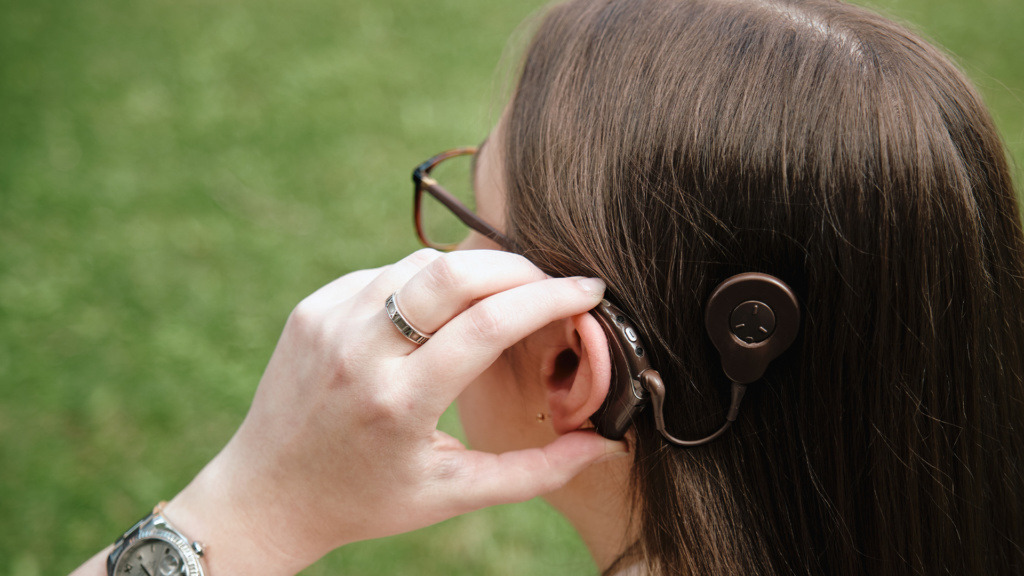
How cochlear implants work
Cochlear implants generate signals that are sent through the auditory nerve, directly to the brain, which then recognises the signal as sound.
The component of a cochlear implant which is surgically implanted consists of:
- A receiver stimulator to receive signals from the speech processor (which sits behind the hear) to convert them into electric impulses, and
- An electrode array which collects the electric impulses from the receiver/stimulator and sends them to different parts of the auditory nerve
It takes time to learn to hear with a cochlear implant as the brain has to learn or relearn how to identify sounds through this new device.
Pros and cons of cochlear implants
Cochlear implants are life-changing implantable devices for individuals with severe or profound hearing loss.
Benefits of cochlear implant include:
- For someone with severe or profound hearing loss, a cochlear implant can allow them to hear and understand speech again
- Cochlear implants enable the brain to take sounds from the external environment via the external processor, process this information, and create meaning of it, allowing someone to hear
- Babies born deaf receiving a cochlear implant early in life can learn to hear and speak just like their siblings and friends
- The ability to recognise speech like someone with typical hearing
- The ability to understand speech without relying on lip reading
- They assist with hearing environmental noise such as footsteps and traffic
- The ability to hear one’s own voice and control it
- Improved language skills as a result of hearing more
Some considerations and cons of cochlear implants include:
- They require a surgical procedure and extensive speech therapy to actively learn or relearn how to hear using the devices.
- Needing to remove the external component while bathing or swimming (however there are accessories that can be worn to make these devices waterproof)
- Recharging or changing batteries frequently
- Risk of accidental damage to the implant
- As a cochlear implant provides the ability to hear through stimulating the auditory nerve, a cochlear implant recipient may lose any residual hearing as a result of the surgery to receive the implant.
Despite some challenges, cochlear implants truly are an incredible device that allow someone who is deaf to hear. Always remember that the team at Hear and Say is here to help should you have any concerns or challenges.

Similarities between hearing aids and cochlear implants
Both cochlear implants and hearing aids work to improve hearing and in turn increase quality of life.

Differences between hearing aids and cochlear implants
Differences between cochlear implants and hearing aids include:
- Hearing aids make sounds louder
- Cochlear implants use electrodes to transmit sound signals which are converted into electrical impulses that can be interpreted by the brain
- Hearing aids are worn inside or behind the ear and are not surgically implanted like cochlear implants are
- Hearing aids are ideal for individuals with mild and moderate hearing loss. Cochlear implants are a good option for individuals with severe hearing loss.
Does my child need hearing aids or a cochlear implant?
Cochlear implants aren't suitable for everyone, so consideration and advice from a medical professional is required.
Cochlear implants are suitable for babies born deaf, children and adults who have severe hearing loss in one or both ears, have not found success in using hearing aids and for those who have been deemed medically fit for this type of surgery.
Hearing aids can be suitable for babies and children with mild to moderate hearing loss.
Regardless of the device chosen it is highly recommended to also seek out speech therapy. A speech therapist can help a child or adult to learn to identify sounds and improve speech and language skills through a range of strategies and techniques.
The most suitable type of device depends on the individual's specific type of hearing loss and needs.
The team at Hear and Say is here to help work out which option is best for you.
Get in touch



